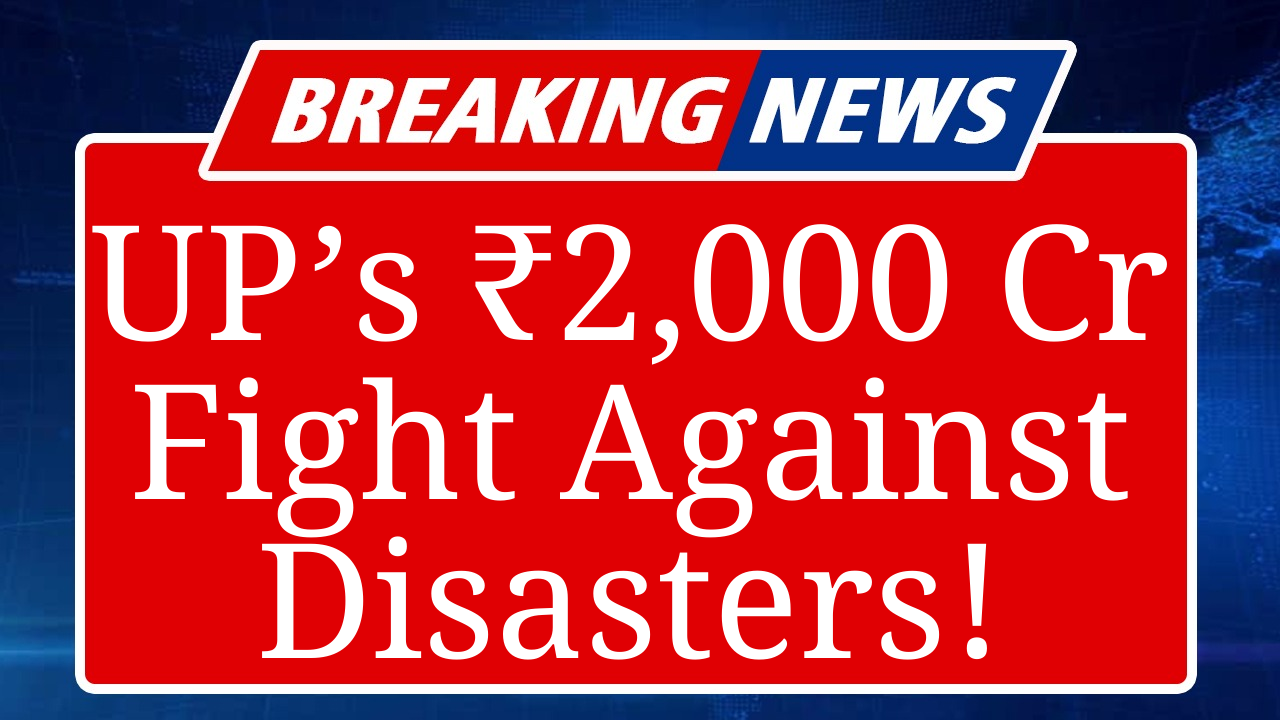UP Bolsters Relief Funds for Natural Disaster Victims
“Uttar Pradesh has ramped up its disaster relief efforts, allocating substantial funds through the SDRF and tapping into the NDRF to aid victims of floods, cyclones, and other calamities. With over ₹2,000 crore disbursed in 2024-25, the state is enhancing rapid response mechanisms, ensuring timely aid and rehabilitation for affected communities.”
Uttar Pradesh Enhances Disaster Relief Framework
Uttar Pradesh, one of India’s most disaster-prone states, has significantly strengthened its relief mechanisms to address the growing frequency and intensity of natural calamities. The State Disaster Response Fund (SDRF), supplemented by the National Disaster Response Fund (NDRF), remains the backbone of the state’s disaster management strategy. In 2024-25, Uttar Pradesh disbursed over ₹2,000 crore from the SDRF to provide immediate relief to victims of floods, landslides, and other disasters, according to data from the State Disaster Management Authority (SDMA). The central government contributes 75% to the SDRF for general category states like UP, with the state covering the remaining 25%.
The state has faced severe challenges in recent years, with floods affecting millions across districts like Gorakhpur, Varanasi, and Allahabad. In 2024 alone, monsoon-related flooding displaced over 1.5 million people and caused damages worth ₹5,000 crore, as reported by the UP government. To address such crises, the SDRF has been utilized for immediate needs like food, water, shelter, and medical supplies. The state has also allocated up to 10% of SDRF funds for local disasters not listed under the Ministry of Home Affairs’ notified calamities, ensuring flexibility in addressing region-specific issues like unseasonal rains and hailstorms.
The NDRF steps in for disasters of severe nature when SDRF funds fall short. In July 2025, the central government released ₹1,066 crore from the NDRF to six states, including Uttar Pradesh, to tackle monsoon-related floods and landslides. UP received ₹200 crore from this allocation to support relief operations in districts like Bahraich and Sitapur, where flooding disrupted livelihoods. The National Disaster Response Force (NDRF) teams, with over 20 units deployed across UP, have rescued more than 50,000 people this year, showcasing their critical role in ground-level operations.
Non-governmental organizations (NGOs) like Rapid Response and Bal Raksha Bharat have complemented government efforts. Rapid Response, an award-winning NGO, provided food, hygiene kits, and shelter to 10,000 households in UP’s flood-hit areas in 2024. Similarly, Bal Raksha Bharat focused on child-centric relief, distributing education kits and creating safe spaces for children in affected regions. These organizations have emphasized the importance of prepositioned resources for swift action, often bridging gaps in immediate relief before government funds are fully mobilized.
The Prime Minister’s National Relief Fund (PMNRF) also plays a pivotal role in UP’s disaster management. In 2024, the PMNRF supported rehabilitation projects in flood-affected areas, including the reconstruction of homes and schools in eastern UP. Donations to the PMNRF, accepted through UPI and bank transfers, have aided long-term recovery efforts, with over ₹500 crore allocated to UP since 2020 for natural calamity relief.
To enhance preparedness, UP has invested in disaster risk reduction programs. The SDMA has conducted over 500 community-based disaster preparedness workshops since 2023, training locals in flood-prone areas to mitigate risks. These efforts align with the National Disaster Management Authority’s (NDMA) vision of a proactive, technology-driven approach to disaster management. The state is also exploring the State Disaster Risk Management Fund (SDRMF), which includes a 20% allocation for mitigation activities like flood barriers and early warning systems, as recommended by the 15th Finance Commission.
Despite these measures, challenges persist. The SDMA reports that bureaucratic delays in fund disbursal and inadequate infrastructure in rural areas often hamper relief efforts. Experts suggest that UP must streamline its approval processes and invest in climate-resilient infrastructure to reduce the economic burden of disasters, projected to exceed ₹10,000 crore annually by 2030 if current trends continue. NGOs have also called for greater collaboration between the government and private sector to ensure timely aid delivery.
Disclaimer: This article is based on reports from government sources, including the National Disaster Management Authority (NDMA), State Disaster Management Authority (SDMA), and credible NGOs like Rapid Response and Bal Raksha Bharat. Data is sourced from official releases and verified web reports. For the latest updates, refer to ndma.gov.in and pmnrf.gov.in.

